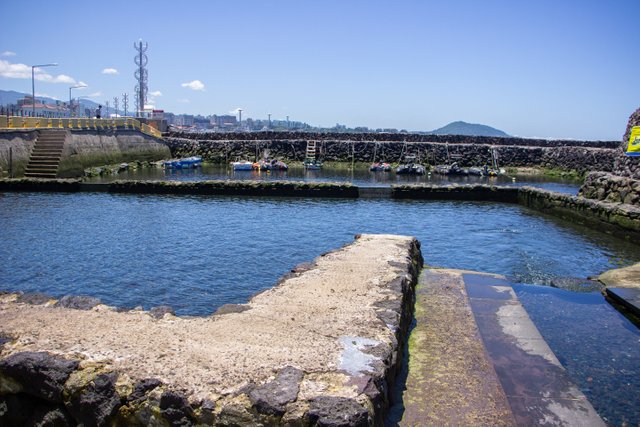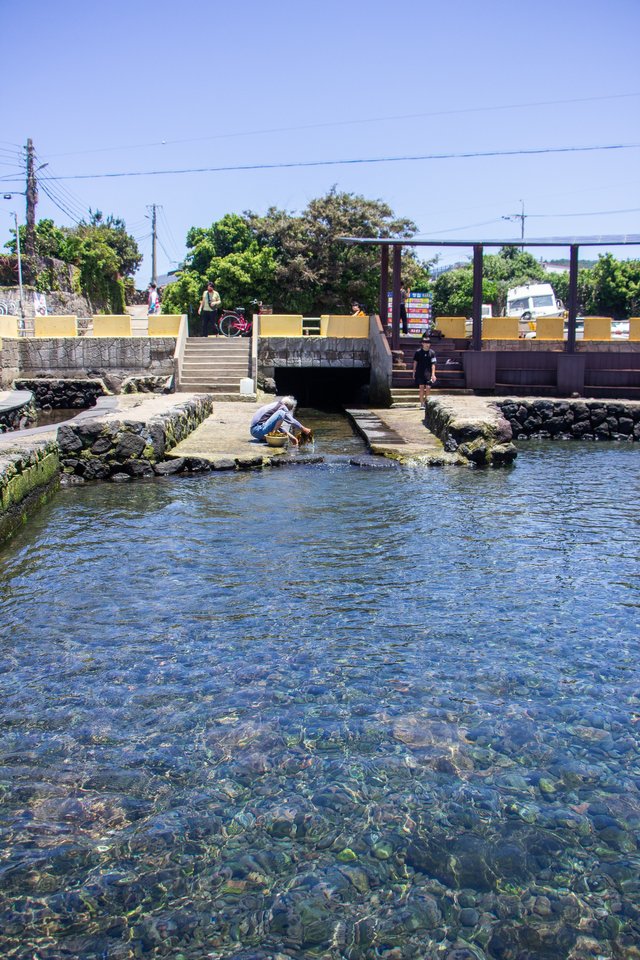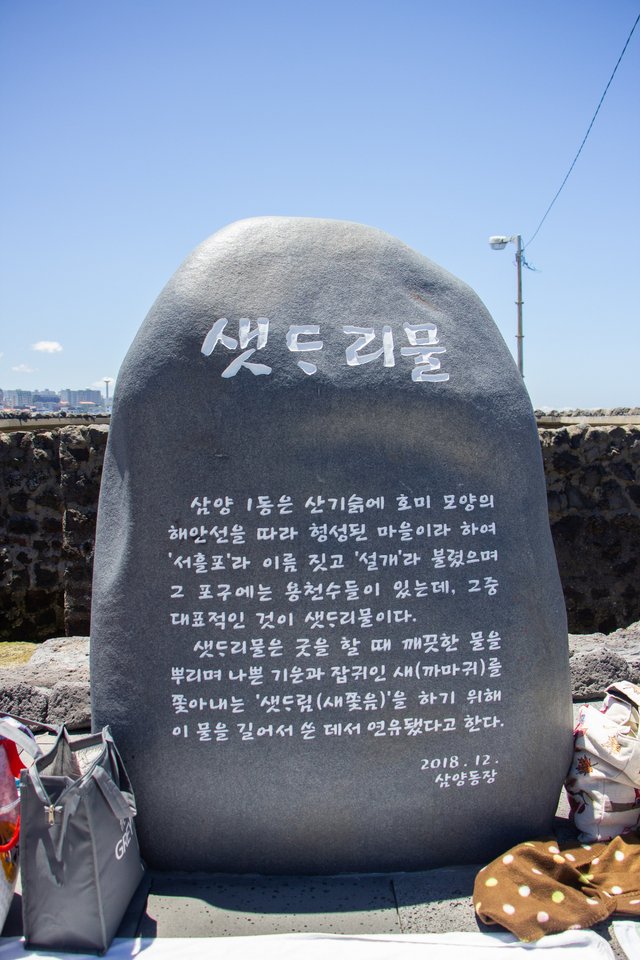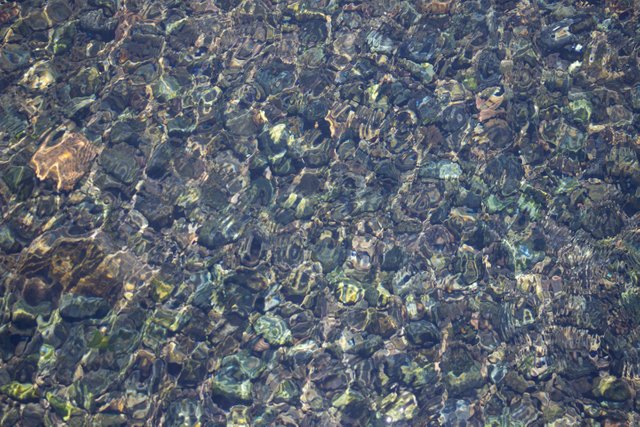제주 해안가를 여행하다 보면 제주 특유의 돌담을 쌓아 물을 가두어 둔 시설물을 종종 볼수있습니다.
이 돌담안의 물은 바로옆 돌담너머의 바닷물과는 확연히 다른 맑은 모습을 볼수 있는데요, 바다와 바로 인접해 있지만 소금기가 없는 담수 입니다.
When you travel along the coast of Jeju Island, you can often see facilities that contain water by building stone walls that are unique to Jeju Island.
The water in this stone wall is clearly different from the sea water in the stone wall right next to it. It is fresh water that is directly adjacent to the sea but has no saltiness.

제주도를 이루고 있는 땅의 많은 부분은 화산활동으로 만들어진 구멍이 많은 현무암으로 이루어져 있습니다.
이런 현무암 지형은 빗물을 잘 흡수하게 되고 흡수된 빗물은 정화되어 섬 가장자리에서 솟아납니다.
이렇게 해안가에서 솟아나는 맑은물을 용천수라고 합니다.
Much of the land that forms Jeju Island consists of basalt with many holes made from volcanic activity.
This basalt topography absorbs rainwater well and the absorbed rainwater is purified and rises from the edge of the island.
The clear water that rises from the shore is called Yongchoensu.

제주도 주민들은 오래전부터 용천수가 솟아나는 인근을 돌담을 쌓아 담수와 해수가 섞이지 않게 방조제를 만들었습니다.
이런 용천수를 마을공동 우물로 사용하고 있습니다.

용천수에 발을 살짝 담궈보면 한여름에도 순식간에 발이 시려울 정도로 물이 차갑습니다.
우리가 말로만 듣던 제주의 자랑 삼다수가 이렇게 콸콸 솟아나고 있고 오래전부터 이런 천연자원을 보존해온 제주도 주민들의 지혜가 보입니다.
If you dip your feet in the spring water, the water is cold enough to make your feet cold even in the middle of summer.
Jeju's pride, Samdasoo, which we've only heard of, is rising like this, and we can feel the wisdom of Jeju residents who have preserved this natural resource for a long time.

제주도에 대해 아주 잘 알고 계시네요.ㅋ
저는 이주해 온지 3년이 가까워 오는데, 이렇게 자세히는 모른답니다.
사실 제주에 살다보면 제주도도 수돗물이 나오니... 이런 옛날 제주인들의 생활을 알기는 그리 쉽지 않거든요.
잘 알고 갑니다.^^
Downvoting a post can decrease pending rewards and make it less visible. Common reasons:
Submit
제주도에서 수도꼭지 틀면 나오는 그 흔한물이 바로 화산암반수 삼다수라 하더라구요 ㅎㅎ
Downvoting a post can decrease pending rewards and make it less visible. Common reasons:
Submit